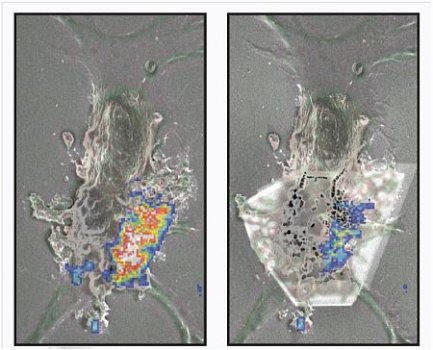Ground breaking x-ray techniques developed through a collaboration between two of Victoria’s leading research support facilities, the Australian Synchrotron and the Melbourne Centre for Nanofabrication (MCN), has enabled research into the human immune response to zinc oxide nanoparticles, used in many consumer products, such as sunscreen.
 “In response to some concerns, this research shows us further evidence that the nanoparticles in sunscreen are unlikely to cause harm to beach-goers”, said Prof Ian Olver from Cancer Council Australia,
“In response to some concerns, this research shows us further evidence that the nanoparticles in sunscreen are unlikely to cause harm to beach-goers”, said Prof Ian Olver from Cancer Council Australia,
“Unlike the sun’s damaging UV rays which we know lead to higher rates of skin cancer and skin damage.”
Zinc oxide nanoparticles are beneficial in sunscreen as they are partially insoluble in water and invisible to the eye, unlike larger white zinc particles which remain on the skin. However, the behaviour of zinc oxide nanoparticles in biological systems is not well understood. This has lead researchers from the Australian Synchrotron, MCN, CSIRO, RMIT and Monash University to delve into what happens to these nanoparticles it they manage to penetrate through the outer skin layers.
The research team used x-ray fluorescence to image immune cells which had been treated with zinc oxide nanoparticles. Using the world-class Maia x-ray fluorescence detector, the researchers were able to count how many of these tiny particles had been absorbed into the cells.
In order to observe the nanoparticles once in the immune cells, the researchers used the Focused Ion Beam Scanning Electron Microscope installed at MCN, to mill away very thin layers of the cell (100x thinner than a human hair), re-imaging the cell as they went. Combining these different techniques produced a unique collection of high-resolution images that allowed the team to observe the immune cells breaking down the nanoparticles as they moved deeper into the cell.
Importantly, these images demonstrate that human macrophages (immune cells that ingest foreign particles) function as expected, ingesting and breaking down any zinc oxide nanoparticles which might enter the blood stream.

Images at right
By carefully measuring the chemical composition of the nanoparticles through sequences of images produced by advanced x-ray techniques, researchers at the Australian Synchrotron, Monash University and Melbourne Centre for Nanofabrication, were able to assess how immune cells break down these tiny particles.
Left: A mass of ZnO nanoparticles associated with a single immune cell. (Yellow and white areas indicate greater numbers of particles than are present in the green and blue regions).
Right: The same immune cell showing the internal structures of the cell revealed after ion-beam ablation, demonstrating the absorption and breakdown of the ZnO nanoparticles deep into the interior.
